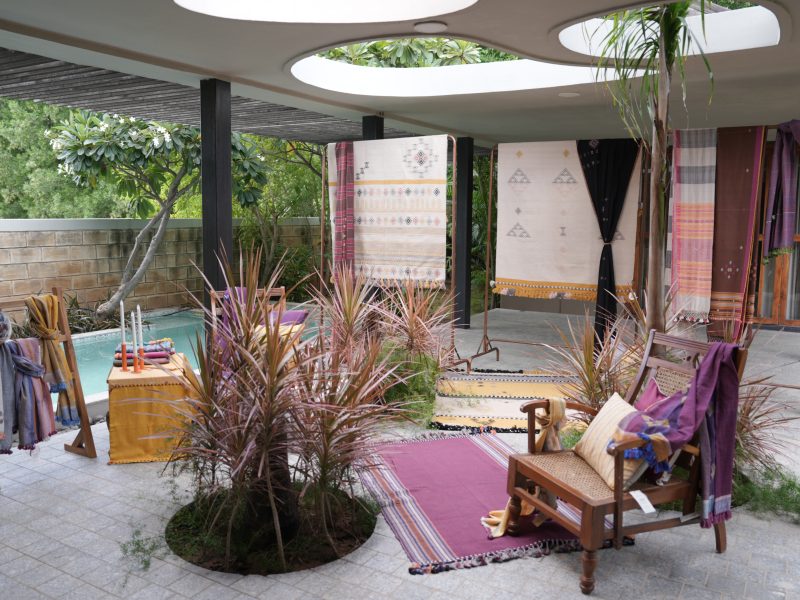Buying art can be a challenge with the plethora of choices available. Do your research before hand and ask questions, so that you end up buying something you will be happy with
One usually buys, or at least ought to buy art–whether it is a sculpture, painting, art print or an installation piece–that has an emotional connect. The possibilities on what one must buy are endless but it eventually boils down to individual taste and preferences.
Raseel Gujral describes art as an expression as well as your perception of reality. Has art changed in the Post Covid world?She says, “The art world is one just microcosm that creates the collective macrocosm. As humanity and as individuals we have navigated the classic stages of acceptance – anger and bargaining, depression, reflection, loneliness… then the upward turn, reconstruction and working through, acceptance and hope. So, the new day emerges from the darkness of night. If life is art and art is life, it’s an ongoing eternal dance.”
Creativity flourishes during times of strife. Says Monica Jain, founder of art gallery Art Centrix Space: “When times are good, people are mostly focused on making money, not on leisure, art etc. In fact there are two times when art flourishes. The first is when there is complete harmony such as during the Chola period or Gupta empire. The political environment is stable, the economy is great, and art flourishes. The other is when there is a crisis, such as the pandemic, which impacted the global community. It is during such difficult times that some of the best art has been produced. The India Art Fair 2022 showcased many artworks created during the past 2-5 years.”
Your art journey
Your starting point should generally be as a viewer, and your role here is exploratory and is all about how your mind connects with that of the artist. Go and see as much art as you can. Doing your research is the best way to learn about the kind of art you actually like, and is the first thing you need to know about collecting. Look at the journey of the artist and see how his life correlates to his artwork. Art critic Gayatri Sinha talks about the influence of partition on Satish Gujral and his set of paintings on that theme. She says, “Gujral looks at Punjab and his experience of ferrying people across the border through Partition art. While most of Punjabis buried this neuroses and holocaust, Satish Gujral spoke about it. It became an inseparable part of his identity and his Punjabiyat.”
She says his partition paintings even had a strong connect with his experience in Mexico and parts of South America that were clamouring for social revolution and resisting industrialisation, and there was a fear that the farmer would be dislocated.
Anyone passionate about collecting art should not hesitate to speak to gallerists. They are the resident experts on the artworks they’re exhibiting, and will address every query on the artist. Says Art Centrix’s Jain” “An artist working with an art gallery will always have an edge over one working independently. As galleries, we become the face of that artist, and if you have a query, we will fill you in with the images, price, materials used, details of artwork, year of creation, and concept note or curatorial note on what we think the artwork means, among other things, as an art buyer, you can be assured since we are responsible for tracking that artist. We also help and support the artist, advise him on how to price the artworks, and even put him on to a mentor if needed.”
One must even ask questions about the logistics of making an art purchase, such as framing, installation, and transport. Most gallerists will help you with everything from packing to transportation. However, do ask them to set out all the additional costs before you buy. Delivery and taxes can be extra expenses, so be sure to budget for them. Shipping cost varies from Rs 10,000 to Rs 1 lakh. One gallery owner says he sold a beautiful terracotta piece in 2020 for Rs 1.5 lakh to a collector in the US, who paid an additional Rs 75,000 for shipping.
Bear in mind other factors — such as the rarity of the artwork, the artist’s career, art world recognition and market demand. It is factors such as workmanship, intricacy of design, material used, artist’s name that set the price of the piece. Size is secondary.
The artwork may not necessarily burn a big hole in your pocket if you know your mind and your budget. Recently India Art Fair 2022 showcased works across a spectrum of budgets, starting from Rs 10,000 for art prints of major modernist works by Archer Art Gallery to Rs 50,000-70,000 for pieces by an emerging talent like Waleed Zafar, Yogesh Ramkrishna or Zarrin Fatima Shamsi.
Says Anica Mann, Young Collectors Programme, India Art Fair 2022: “You can buy a saree from a craftsman, from Nalli, or you can buy it online. You ask questions about the value and cultural significance. It’s the same with art. You must know what and where to buy from–-Lado Sarai, Defence Colony or art shows. You can pay as little as Rs 5,000 for a photograph, or in crores like a Raja Ravi Verma painting.”
She adds that when our parents would collect crockery, they would buy a certain type that matched their home. The same holds true for art. Essentially, you are buying a piece of beauty that seldom serves a functional purpose. Its aim is to the romantic or aesthetic side of your personality. Some people don’t look for even two minutes and buy so much, while others keep looking and become confused. The art world, like other sectors, has its share of compulsive shoppers, impulsive shoppers, slow shoppers, and window shoppers.
What’s trending
The buzzword currently is Indian contemporary and modern art. There is a growing demand for leading modern masters such as M F Husain, V S Gaitonde, S H Raza and F N Souza, Prabhakar Barwe, K K Hebbar, and Amrita Sher-Gil. Then there are senior living artists with 15-25 years of work experience, and younger ones with 5-10 years. As for the collectors, their age is coming down from 40 years to 25 years.
Traditional arts continue to co-exist. Take the case of Pichwai art, which is about Lord Krishna and his tales. Says Delhi-based collector Mala Malhotra: “Pichwai is closest to nature and culture. This Indian folk art originated over 400 years ago in Nathdwara near Udaipur, Rajasthan. I love the fact that it uses only natural colours and vegetable dyes. The paintings are made on cloth with a natural brush made from animal hair or cotton thread.” An artwork (8 inches by 8 inches) made in pure silver and pure gold costs Rs 25,000 while the bestselling category is 3 feet by 4 feet or 6 feet by 4 feet approximately and is priced at about Rs 2.4 lakh.
Finally, art enables us to find ourselves and lose ourselves at the same time. It can comfort the disturbed and disturb the comfortable.
Table: Want to buy art? There is something for everyone across a spectrum of prices
|
Category of art |
Ballpark price range (Rs) |
| Art prints | 10,000-1 lakh |
| Documentary photography | 50,000-5 lakh |
| Textile work as art | 50,000-10 lakh |
|
Sculpture |
2-50 lakh |
| Upcoming artists | 20,000-2 lakh |
| Contemporary artists | 5 lakh-1 crore |
|
Modern Masters |
70 lakh-5 cr |
Credits: Market Research





Top ,.. top top … post! Keep the good work on !